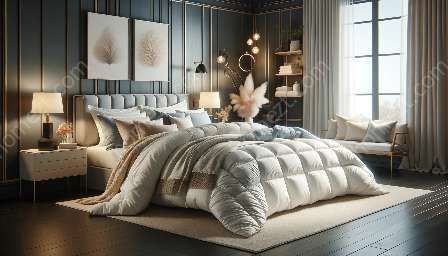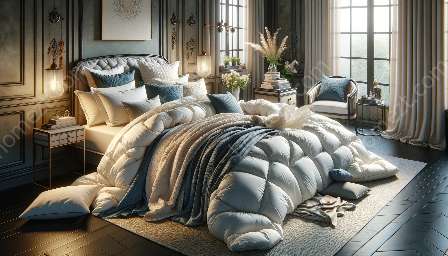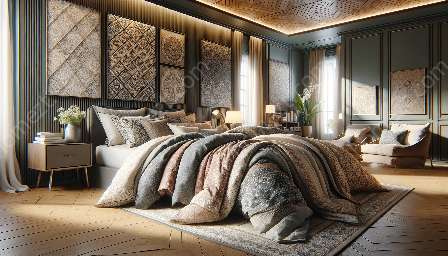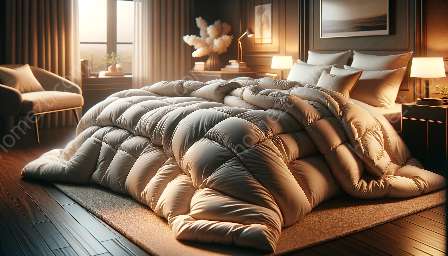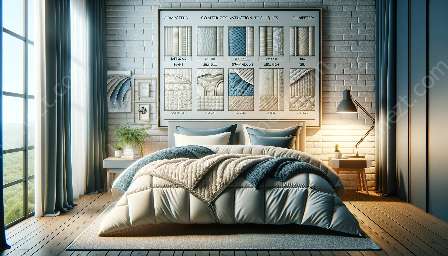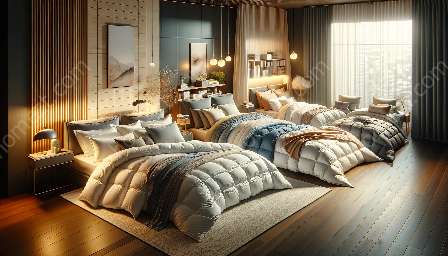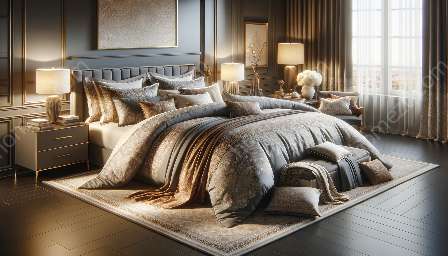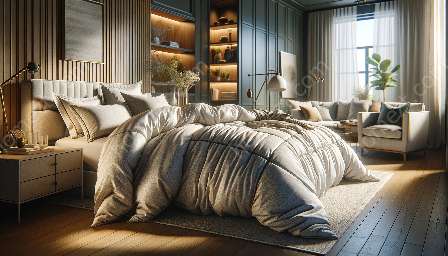Comforters are an essential part of bed and bath accessories, providing warmth, comfort, and style. The choice of materials used in comforters greatly impacts their quality and performance. From natural to synthetic materials, there are various options available to suit different preferences and needs. Understanding these materials can help you make an informed decision when choosing a comforter. Let's delve into the diverse materials used in comforters and explore their unique benefits and features.
Natural Materials
1. Down: Down comforters are highly prized for their exceptional warmth and lightness. These are made from the soft, fluffy undercoating of waterfowl, such as ducks and geese. Down clusters create insulating air pockets that provide excellent thermal properties, making them ideal for cold sleepers. Additionally, they offer good breathability, enabling moisture and heat to dissipate for a comfortable sleeping experience.
2. Wool: Wool comforters are known for their natural insulation and moisture-wicking properties. They regulate body temperature, keeping you warm in winter and cool in summer. Wool is also hypoallergenic and resistant to dust mites, making it a great choice for individuals with allergies or sensitivities.
3. Silk: Silk comforters are luxurious and silky-smooth, offering a lightweight and breathable sleeping experience. Silk naturally wicks away moisture, keeping you dry and comfortable throughout the night. It is also hypoallergenic and resistant to mold and mildew, making it an excellent option for those with allergies.
Synthetic Materials
1. Polyester: Polyester-filled comforters are affordable and easy to care for. They are lightweight, durable, and provide good insulation. Additionally, polyester comforters are hypoallergenic and resistant to mold and mildew, making them suitable for allergy sufferers.
2. Microfiber: Microfiber comforters are constructed from ultra-fine synthetic fibers, offering a soft and plush feel. They are designed to mimic the softness and warmth of natural down, while being more affordable and easier to maintain. Microfiber is also hypoallergenic and resistant to wrinkles, ensuring a lasting aesthetic appeal.
Blended Materials
1. Cotton Blend: Cotton-blend comforters combine the natural breathability and softness of cotton with the durability and wrinkle resistance of synthetic fibers. These comforters are easy to maintain and suitable for all seasons, providing a comfortable and versatile bedding option.
2. Bamboo Blend: Comforters made from a blend of bamboo and other fibers offer a luxurious and eco-friendly bedding solution. Bamboo is naturally breathable, antimicrobial, and sustainable, making it an excellent choice for environmentally conscious consumers.
Conclusion
When selecting a comforter, the choice of materials plays a pivotal role in determining its performance, durability, and comfort. Understanding the unique characteristics of different materials can help you choose a comforter that suits your individual preferences and enhances your overall sleeping experience. Whether you prefer the natural warmth of down, the versatility of synthetic fibers, or the luxurious feel of blended materials, there is a wide range of options to cater to your specific needs.

